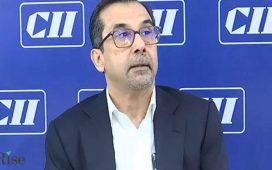Chairs of the John Lewis Partnership usually go on and on. Before Dame Sharon White took the role in February 2020, only four people had done the job since 1955. Her two immediate predecessors served 13 years and 14 years. For White to announce that she’ll be off by early 2025 – long before a final reckoning can be made on her turnaround programme – is a big shift for an organisation that talks constantly about its culture. It is also the correct decision.
First, White gave the place a heart attack earlier this year with her confused messaging about when or if the partnership would consider outside investors. Even her supposedly clarifying messages didn’t resolve the mystery. On one hand, she said the business would always be an employee-owned “no ifs no buts”; on the other, she said “if at any point the partnership were unable to fund all our plans through our own means, the board could consider external investment”.
Did she mean that joint ventures, such as the current one with Abrdn in rented housing and the former one with Ocado at Waitrose, were the extent of what could be contemplated? Or was she hinting at something else? Either way, partners and customers heard a signal of self-doubt and panic, even though the group was making reasonable progress in reducing borrowing. It was a confidence-sapping episode that was impossible to forget.
The second reason why change is sensible is that White, for all the undoubted analytical skills she displayed when boss of the media regulator Ofcom, was not steeped in frontline retail experience. Career shopkeepers can be pompous about the supposed specialness of their industry, but there is a reason why it is extremely rare to find a retailing newcomer in the top executive position (White is chair, but executive chair) in a business with a £10bn turnover.
None of which is to deny that White was unlucky in her timing. She walked into the Covid pandemic, and the partnership, circa 2020, was in a weaker state that the outside world realised at the time. Waitrose had expanded from 126 to 336 branches since the turn of the century and the number of department stores had almost doubled. In hindsight, too much new floorspace was added in the era of online shopping – and, worse, the IT systems had not been upgraded to cope.
The Covid culling of John Lewises (16 were closed, 34 remain) was brutal but surely also justified. On that score, future reviews may say White made the right call. It was also her lot to have to deliver the unavoidable news to staff that annual bonuses were unaffordable at the old level. And the end of “never knowingly undersold” was inevitable because it was costing a small fortune.
Trading was described as “improving” in half-year results a fortnight ago, suggesting the worst of the storm may have passed. But the target date for an annual “sustainable” profit of £400m was pushed back by two years to 2027-28. In those circumstances, it’s probably sensible to let fresh eyes take a look. John Lewis cannot afford a relapse.
after newsletter promotion
The chairmanship, one assumes, will become a non-executive role since there is now a chief executive (Nish Kankiwala), but it still won’t be easy to fill the post. High-profile retailers on the non-exec circuit might profess admiration for employee-ownership in the abstract but would hate the reality of being answerable to an elected partnership council. Others may take the view that it’s impossible to hire senior executives on the sub-market salaries that John Lewis pays at the top – an under-appreciated challenge. The group has a year to find a successor. It may need it.








